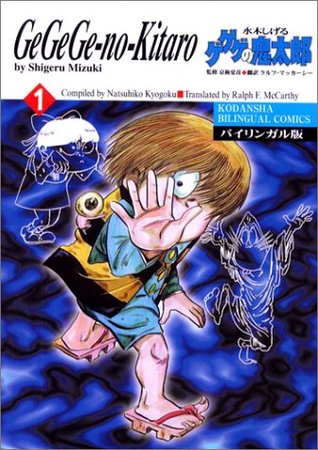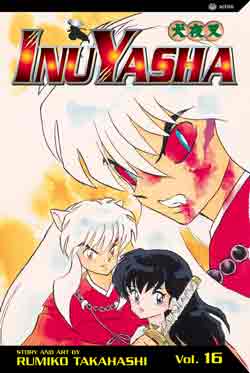From the early 1920s through the late 1950s, before television became a fixture in Japanese homes, audiences flocked to kamishibai performances on street corners and parks around the country. A kamishibaiya (storyteller) would pedal from village to village with a butai (small wooden stage) perched on the back of his bicycle. When he arrived in a new community, he would click two sticks together to announce his presence, selling candy to the growing assembly of children. He would then show the audience a series of colorfully painted panels that told a story in much the same fashion as a comic book, narrating as he removed them one at a time from the butai.
At the height of its popularity in the 1930s, nearly five million people attended kamishibai performances every day. There were kamishibai for every demographic: sentimental tales about kittens and orphans for girls, adventure stories about masked heroes and mountaineers for boys, and pulpy mysteries and historical dramas for adults. A small army of artists and writers cranked out new installments of popular stories such as Golden Bat, Tiger Boy, Prince Gamma, and Cry of the Andes, providing an important training ground for such postwar manga-ka as Kazuo Koike, Sanpei Shirato, and Shigeru Mizuki.

Mizuki’s best-known comic, GeGeGe no Kitaro, traces its roots to the 1930s, when kamishibaiya around Japan performed Hakaba no Kitaro, a supernatural tale about a yokai boy who lived in a graveyard. Though Mizuki didn’t create Kitaro, he was responsible for adapting Hakaba no Kitaro into manga form, publishing his first Kitaro stories for the akabon (rental comics) market in 1959. Kitaro eventually found a home at Weekly Shonen Magazine in 1966, where the editors renamed it GeGeGe no Kitaro. Kitaro proved immensely popular, spawning animated television shows, feature-length movies, and video games, not to mention numerous manga sequels in Shonen Sunday, Shonen Action, and Shukan Jitsuwa.
Despite its immense popularity in Japan, none of the GeGeGe no Kitaro manga have been licensed for the North American market. In 2002, Kodansha International hired Ralph McCarthy to translate a handful of the Weekly Shonen Magazine stories, collecting them in three bilingual editions. Those volumes are scarce — at least on this side of the Pacific — although I was able to snag the first on eBay for less than $20. (Caveat emptor: Some Amazon retailers are asking as much as $345.00 for a single volume of the Kodansha Bilingual Comics edition.)
Looking through the pages of volume one, the story’s roots in kamishibai are apparent. The first chapter, “Ghost Train,” is a classic example of comeuppance theater: after two Tokyo businessmen abuse Kitaro and his sidekick Ratman, the men find themselves aboard a mysterious train whose final destination is Tama-reien (Tama Cemetery). The pacing suggests a story told at a campfire, allowing the audience to savor the word play (all the stops on the Tama-reien line have eerie names), the description of the passengers, and the two businessmen’s growing sense of terror. Though the pictures carry the weight of the storytelling, Mizuki uses an omniscient narrator to heighten the reader’s awareness of sound. “The skeleton-thin attendant blew his flute, and a tram came screeching into the station like a rickety hearse,” the narrator informs us. “The door rattled open like the door to a crematorium.”
The narrator serves another important purpose as well, filling in the gap between images, just as a kamishibayai would have done in the 1930s. Towards the end of the story, for example, the two men decide to leap from the train, rather than ride it to its final destination. Mizuki draws their awkward jump, then cuts to an image of the ghost train speeding along a dark track, barely distinguishable from the night sky and grassy wasteland it traverses. “Their heads cracked against something hard — rocks, perhaps,” the narrator explains. “A wail of agony splits the air, then all was silence once again.” This statement proves essential to setting up the story’s punchline, bringing the men’s ordeal to a dramatically suggestive end that is deftly clarified in the last four panels.
The second chapter, “The Leviathing,” owes a debt to such kamishibai mainstays as Golden Bat and Prince Gamma, serial adventures that freely mixed elements of science fiction, mystery, and fantasy. In “Leviathing,” Kitaro joins a scientific expedition to New Guinea, where an unscrupulous scientist injects Kitaro with a prehistoric animal’s blood, transforming Kitaro into a hairy, seven-story beast with the head of a whale and the body of a yeti.
As in “Ghost Train,” an omniscent narrator plays an important role in advancing the story, describing the changes in setting, and revealing the limitations of Kitaro’s new form. “Kitaro tried to yell, ‘Father!’, but all that came out was the Leviathing’s roar,” the narrator intones. “He put down his frightened father and walked away.”
Vital as the narration may be, it’s the artwork that underscores the poignancy of Kitaro’s situation. Mizuki draws the Leviathing in a dramatically different fashion when viewed from below than when viewed close-up: from the perspective of a human bystander, the Leviathing is monstrous, with an enormous, gaping mouth and short, grasping arms. Up close, however, he’s a gentle creature, capable of frowning, sighing, and shedding tears. These close-ups help remind us that it’s Kitaro trapped inside this destructive body, unable to communicate with humans or yokai; there’s simply no place for a giant prehistoric creature in such a thoroughly urbanized landscape, a point underscored by the military’s brutal efforts to eradicate Kitaro by driving him out to sea.
Although “The Leviathing” may strike readers as a sci-fi romp and not a ghost story, it illustrates one of the series’ most important themes: displacement. In many of the Kitaro stories, he struggles to find a place for himself — and his yokai friends — in an increasingly modernized world. As Jonathan Clements observes,
Mizuki was one of the first manga creators to deal with the rush of modernity, depicting Japanese ghosts largely as peaceful, gentle creatures forced into action by the encroachment of human civilisation on their remote, secluded places of haunting. In particular, he cited electric light as the main nemesis of spirits from the otherworld, giving his stories an elegiac quality that celebrates Japanese folktale traditions, even as he laments their passing.
Readers familiar with GeGeGe no Kitaro from its numerous film and television adaptations may find the bilingual edition a frustrating introduction to the manga, as many of the series’ colorful supporting players — Daddy Eyeball, Catchick, and The Sand Witch — play minor-to-nonexistent roles in the first volume. Readers interested in manga’s history, however, will find the first volume of the bilingual edition a fascinating window into the pre-war Japanese entertainment industry, offering English-speakers a hint of the stories and storytelling practices that once enchanted Japanese audiences on street corners around the country. Below, you’ll find a short bibliography of articles and books about Kitaro and kamishibai, should you wish to learn more about this famous character’s roots.
For Further Reading
Clements, Jonathan. “Spooky Ooky.” Schoolgirl Milky Crisis. 13 September 2010. <http://schoolgirlmilkycrisis.com/blog/?p=1710>. Accessed 11/6/11.
Kobayashi, Kenji and Kelly Yamamoto. “Kamishibai Theater.” Japanese American National Museum. <http://www.janm.org/janmkids/kamishibai.php>. Accessed 11/7/11.
Kyogoku, Natsuhiko. “Afterword.” GeGeGe no Kitaro, Vol. 1. Trans. Ralph F. McCarthy. New York: Kodansha International, 2002. 123-25.
McCarthy, Helen. “Spooky Kitaro’s Sixth Generation.” Suite 101. 6 May 2008. <http://helen-mccarthy.suite101.com/spooky-kitaros-sixth-generation-a52997>. Accessed 11/6/11.
Nash, Eric. Manga Kamishibai: The Art of Japanese Paper Theater. New York: Harry N. Abrams, 2009.




Jade Harris says:
This is the main title that my Japanese friends think should be licensed in the US when they hear about some of the other classics we already have. Even for contemporary moe fanatics, it’s an important part of the manga cultural landscape. It’d definitely be a hit with the classic manga enthusiasts over here.
Katherine Dacey says:
I’ve seen several authors speculate that GeGeGe no Kitaro never crossed the Pacific for cultural reasons — namely, that Americans didn’t know enough about Japanese folklore to truly appreciate Kitaro. Given how many licensed manga involve yokai of some type, I can’t imagine that such a cultural barrier still exists; if anything, I’d think there was greater interest in the series now than there might have been ten years ago, thanks to series such as InuYasha, Nura: Rise of the Yokai Clan, and Tactics (to name just a few). I would love it if Kodansha released the original Weekly Shonen Magazine series in a deluxe format!